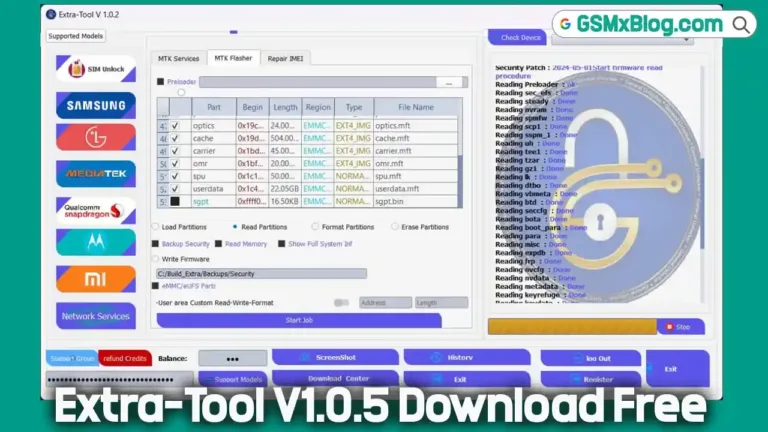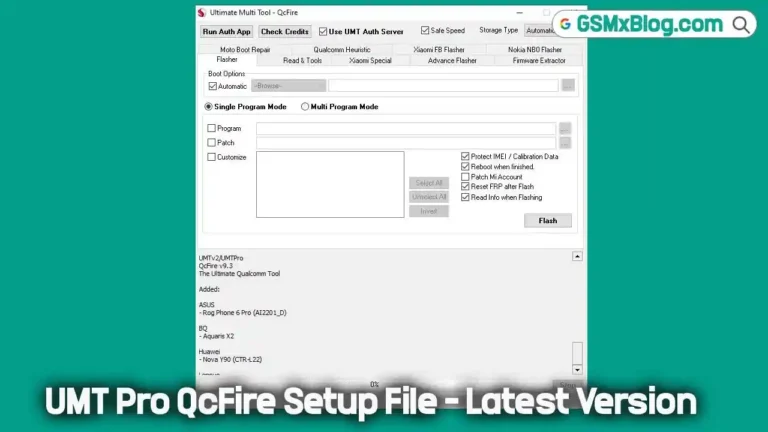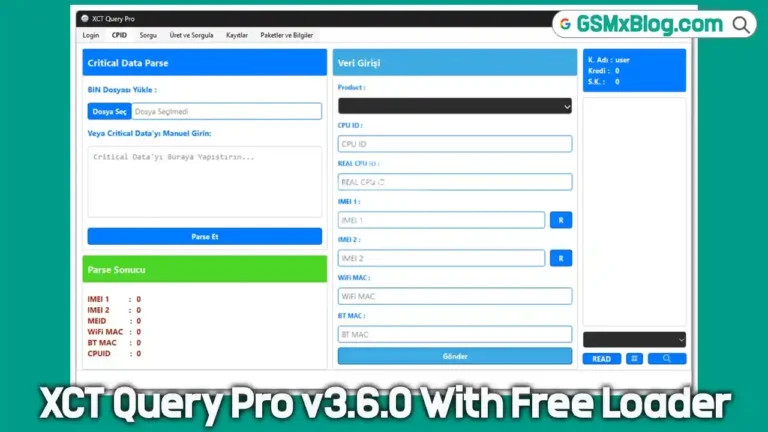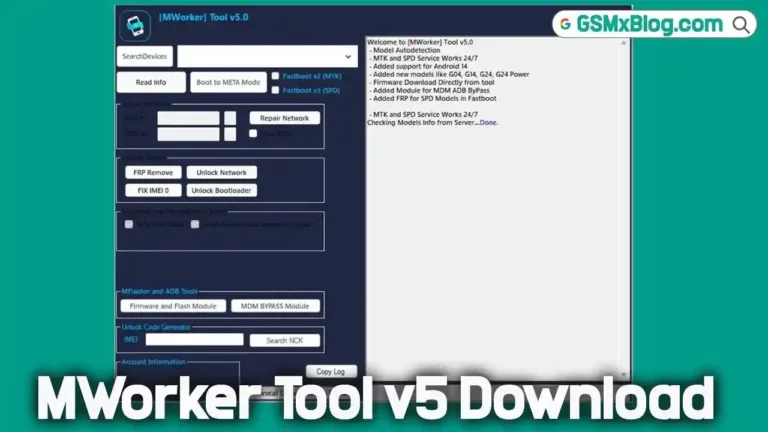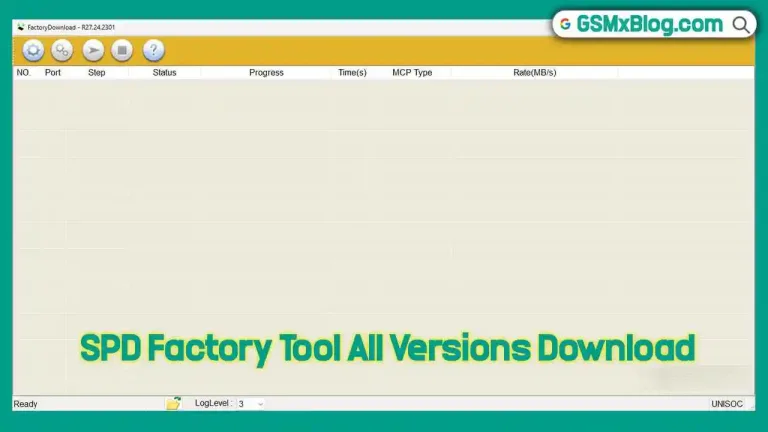Download UMT EMMC Tool v0.4.1 (Latest Version) – Ultimate EMMC Repair & Unlock Solution
Are you struggling with a corrupted eMMC chip, screen-locked phone, or FRP issues? The UMT EMMC Tool v0.4.1 is your one-stop Windows utility designed to repair, program, and manage eMMC storage on Qualcomm and MediaTek devices. Developed by the trusted UMT (Ultimate Multi Tool) team, this powerful yet compact tool provides deep access to read/write partitions, reset screen locks, erase FRP, and more.
In this article, we provide the official UMT EMMC Tool v0.4.1 setup file, a detailed installation guide, and full feature breakdown – helping you get started quickly and confidently.

What is UMT EMMC Tool?
UMT EMMC Tool (also known as Ultimate EMMC Module) is a lightweight but advanced repair application from the Ultimate Multi Tool (UMT) team. This tool helps technicians and power users perform essential tasks such as:
- Reading/writing eMMC partitions
- Flashing firmware
- Formatting data safely
- Resetting screen locks and removing FRP
⚠️ Note: This tool requires UMT Box or UMT Dongle to function properly. Without it, the software will not detect devices or work as expected.
Key Features of UMT EMMC Tool v0.4.1
The UMT EMMC Tool offers a range of advanced functionalities, including:
✔ Read & Write Dump Files – Backup and restore eMMC partitions.
✔ Flash Firmware – Supports Qualcomm & MediaTek chipsets.
✔ Remove FRP Lock – Bypass Google account verification.
✔ Unlock Screen Lock – Reset device passwords without data loss.
✔ Partition Management – Erase, format, or repair corrupted partitions.
✔ SD Card Support – Read/write SD card images.
✔ Fast Data Transfer – High-speed communication with eMMC chips.
✔ User-Friendly Interface – Easy navigation for beginners and pros.
Download UMT EMMC Tool v0.4.1 (Latest Version)
- File Name:
UMTv2_UMTPro_UltimateEMMC v0.4.1.zip - File Size: 117 MB
- Platform: Windows (32-bit & 64-bit)
- Developer: UMT Team
- Download Link: Google Drive
⚠ Note: You need a UMT Box or Dongle to use this tool effectively.
How to Install & Use UMT EMMC Tool
Step 1: Download & Install
- Download the ZIP file from the link above.
- Extract the package (contains Setup, USB Drivers, and Tutorial).
- Run the installer and follow on-screen instructions.
Step 2: Install USB Drivers
- Ensure proper USB drivers are installed for your device.
- Enable USB Debugging on the target device (if applicable).
Step 3: Using the Tool
📌 Writing a Dump File
- Open UMT EMMC Tool and connect the eMMC chip.
- Select EXT CSD, User Area, Boot1, or Boot2 file.
- Click “Write” to flash the dump.
📌 Flashing Firmware
- Go to the “Factory Image” tab.
- Choose the CPU platform (Qualcomm/MediaTek).
- Locate the firmware file and click “Write”.
📌 Removing FRP Lock
- Navigate to “User Area Partition”.
- Click “Special Task” → “Clear FRP”.
📌 Resetting Screen Lock
- Go to “User Area Partition”.
- Click “Special Task” → “Factory Reset”.
Requirements
To run UMT EMMC Tool smoothly, ensure your PC meets the following:
- ✅ Windows 7, 8, 10, 11 (32-bit or 64-bit)
- ✅ Minimum 2 GB RAM (4 GB recommended)
- ✅ .NET Framework 4.5+
- ✅ UMT Box or Dongle
- ✅ Proper EMMC socket or adapter
Related Tools
- 🔗 UMT HST Tool (Ultimate HST) Latest Version
- 🔗 UMT Card Manager (Latest Version)
- 🔗 UMTv2 UltimateMTK v0.9 (Latest Version)
Conclusion
The UMT EMMC Tool v0.4.1 is an essential utility for mobile repair technicians dealing with eMMC chip issues. With features like FRP removal, partition management, and firmware flashing, it’s a must-have tool for advanced repairs.
🔧 Need help? Drop a comment below!
Frequently Asked Questions (FAQs)
❓ Is UMT EMMC Tool free?
The tool requires a UMT Dongle/Box for full functionality.
❓ Does it work without a UMT Box?
No, a UMT hardware dongle is mandatory for operation.
❓ Can I use it on Mac/Linux?
No, it’s Windows-only (supports 32-bit & 64-bit).
❓ Is it safe to use?
Yes, but improper use may brick your device—follow instructions carefully.
